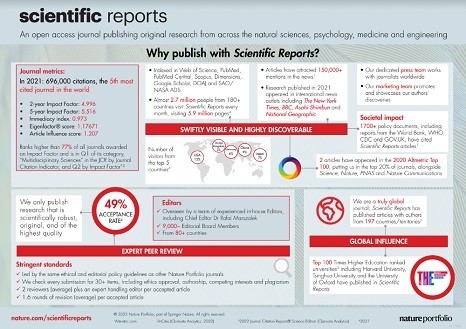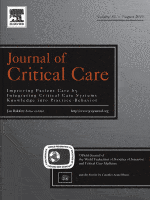
Antimicrobial Dosing Concepts in Patients with Reduced Kidney Function (2560)
Antimicrobial Dosing Concepts in Patients with Reduced Kidney Function (2560)
ผู้เขียนบทความ: ผู้ช่วยศาสตราจารย์ ดร. ภก. วีรชัย ไชยจามร
บทคัดย่อ:
การใช้ยาต้านจุลชีพสำหรับการรักษาภาวะติดเชื้อ จำเป็นต้องพิจารณาจากปัจจัยหลายด้าน ทั้งจากยาต้านจุลชีพและสภาวะผู้ป่วย เชื้อก่อโรค รวมถึงบริเวณที่ติดเชื้อ ในอดีต ปัจจัยสำคัญที่เป็นตัวกำหนดในการเลือกยาต้านจุลชีพได้แก่ เชื้อก่อโรค ค่า minimum inhibitory concentration (MIC) และความไวของเชื้อ (in vitro antimicrobial susceptibility patterns) แต่การพิจารณาจากปัจจัยดังกล่าวข้างต้นยังไม่เพียงพอในการดูแลผู้ป่วยภาวะติดเชื้อให้เหมาะสมและมีประสิทธิภาพ ปัจจัยอื่นที่ต้องพิจารณาร่วมด้วยคือ การมีระดับยาที่เพียงพอในบริเวณที่เกิดภาวะติดเชื้อ (infection site) และพยาธิสภาพของผู้ป่วยที่ส่งผลต่อเภสัชจลนศาสตร์และเภสัชพลศาสตร์ของยาต้านจุลชีพที่เลือกใช้ เพื่อให้เกิดผลลัพธ์ในการรักษาที่ดี คือ การหายจากภาวะติดเชื้อ การป้องกันการเกิดเชื้อดื้อยา และผู้ป่วยไม่เกิดพิษจากการได้รับยาต้านจุลชีพในขนาดที่ไม่เหมาะสม
คำสำคัญ:
Link to Academic article: Antimicrobial Dosing Concepts in Patients with Reduced Kidney Function

Citrate pharmacokinetics in critically ill liver failure patients receiving CRRT (2022)
Title : Citrate pharmacokinetics in critically ill liver failure patients receiving CRRT
Researcher : Thanapongsatorn, P., Chaijamorn, W.,[mfn]1[/mfn] Sirivongrangson, P., …Lucksiri, A., Srisawat, N.
Department : 1Faculty of Medicine, Siam University, Bangkok, Thailand
Abstract : Citrate has been proposed as anticoagulation of choice in continuous renal replacement therapy (CRRT). However, little is known about the pharmacokinetics (PK) and metabolism of citrate in liver failure patients who require CRRT with regional citrate anticoagulation (RCA). This prospective clinical PK study was conducted at King Chulalongkorn Memorial Hospital between July 2019 to April 2021, evaluating seven acute liver failure (ALF) and seven acute-on-chronic liver failure (ACLF) patients who received CRRT support utilizing RCA as an anticoagulant at a citrate dose of 3 mmol/L. For evaluation of the citrate PK, we delivered citrate for 120 min and then stopped for a further 120 min. Total body clearance of citrate was 152.5 ± 50.9 and 195.6 ± 174.3 mL/min in ALF and ACLF, respectively. The ionized calcium, ionized magnesium, and pH slightly decreased after starting citrate infusion and gradually increased to baseline after stopping citrate infusion. Two of the ACLF patients displayed citrate toxicity during citrate infusion, while, no ALF patient had citrate toxicity. In summary, citrate clearance was significantly decreased in critically ill ALF and ACLF patients receiving CRRT. Citrate use as an anticoagulation in these patients is of concern for the risk of citrate toxicity.
Link to Academic article: https://www.nature.com/articles/s41598-022-05867-8
Journal : Scientific Reports,
Bibliography : Thanapongsatorn, P., Chaijamorn, W., Sirivongrangson, P., Tachaboon, S., Peerapornratana, S., Lumlertgul, N.,…Srisawat, N. (2022). Citrate pharmacokinetics in critically ill liver failure patients receiving CRRT. Scientific Reports, 12(1), 1815.

Doripenem dosing regimens in Asian critically ill patients with continuous renal replacement therapy (2019)
Title : Doripenem dosing regimens in Asian critically ill patients with continuous renal replacement therapy (2019)
Researcher : Chaijamorn, W., Puchsaka, P.W., Pattharachayakul, S., …Boonpeng, A., Pummangura, C.
Abstract : Antibiotic dosing in critically ill patients with continuous renal replacement therapy (CRRT) is still challenging. Pharmacokinetic changes in critically ill patients such as increased volume of distribution and decreased protein binding affinity affect hydrophilic drug dosing regimens [1]. Consequently, we might prescribe inadequate doses of antimicrobial agents in patients with CRRT [1] which can affect the morbidity and mortality associated with sepsis [2]. Requirement of loading dose and higher maintenance doses for this group of patients has been suggested to achieve pharmacokinetic and pharmacodynamic targets [3].
Continuous renal replacement therapy has been utilizing to effectively remove fluid and waste products in this group of patients due to hemodynamic instability [4]. Doripenem is a water-soluble carbapenem antibiotic and commonly used for Gram negative infection in intensive care unit (ICU) [5]. It can be removed by CRRT due to small molecular weight (438.52 Da) and low volume of distribution (16.8 L) [6].
The recommended dosing regimens from clinical resources are mostly from the pharmacokinetic studies in Western patients and there were a few studies conducted in Asian population [[7], [8], [9], [10], [11], [12]]. No suggested doripenem dosing regimens for CRRT patients based on Asian pharmacokinetic parameters exists. This study aimed to define the optimal doripenem dosing regimens using pharmacokinetic parameters from Asian population and body weights of Asian critically ill patients and to evaluate the probability of target attainment (PTA) of recommended dosing regimens from available clinical resources.
Link to article: https://doi.org/10.1016/j.jcrc.2019.04.030
Journal : Journal of Critical Care, 2019, 52.